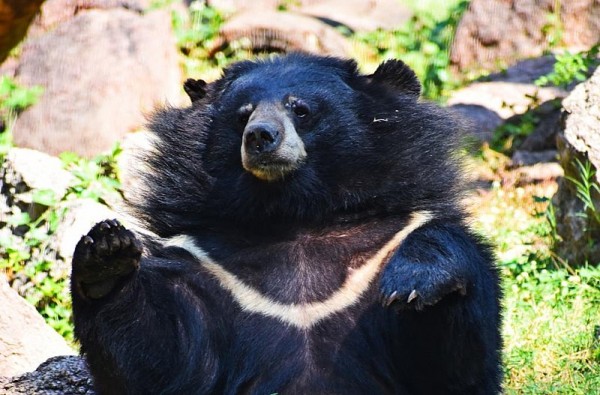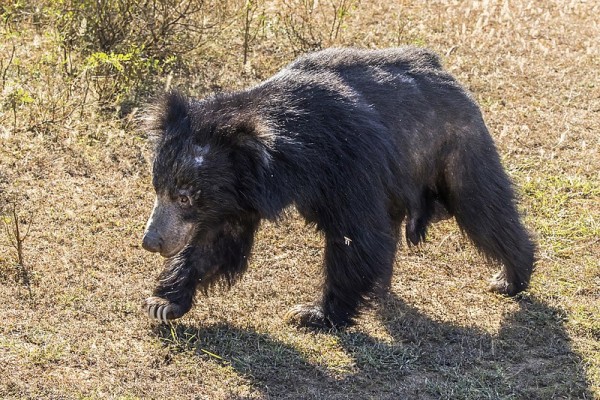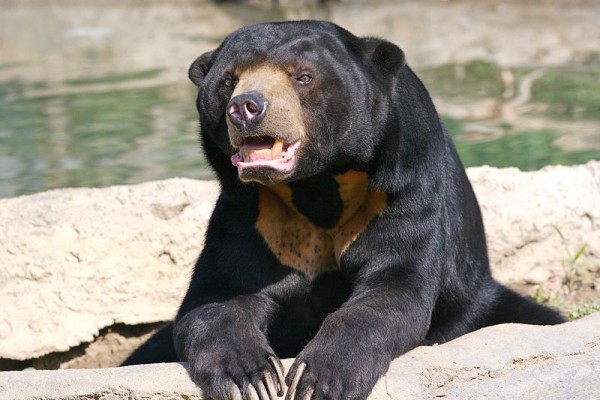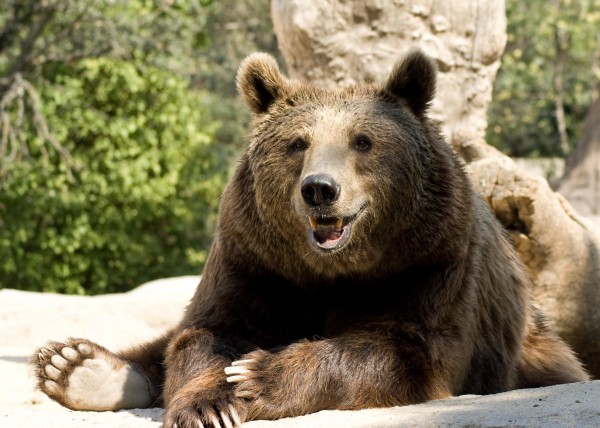The Giant Panda is an icon of China, and, by association, all of Asia. It connects with people’s emotions for both its endangered status and its undeniable cute factor – two things that are easily marketable when it comes to raising money for conservation.
Yet there are actually five bears from Asia. All of which are in danger, but four of them receive little attention or funding. Panda numbers have been increasing (its status has been changed from “endangered” to the less-severe “vulnerable” in the The International Union for Conservation of Nature [IUCN] Red List of Threatened Species), mostly due to the money poured into the panda brand. “Monetary investment in such universally pleasing campaigns are also much more significant than campaigns for other bears,” says Kartick Satyanarayan, CEO and co-founder of Wildlife SOS, a wildlife conservation organisation in India.
Other Asian bears - the Asiatic black bear, found from the Himalayas to East Asia; the sun bear, which lives in Southeast Asia; the sloth bear, native to the Indian subcontinent; and the brown bear, found across Eurasia – are largely neglected when it comes to conservation. Brown bears are critically endangered in some parts of Asia, while the other bears are all deemed vulnerable according to the aforementioned Red List.
What conservation efforts are being made for these forgotten Asian bears?
Asiatic Black Bear

The Asiatic black bear, Asian black bear, or Himalayan black bear | Photo: Wikimedia
This bear – which looks similar to the brown bear but with a slighter build - has a reputation of being aggressive to humans. Asiatic black bears occupy the band of land that spans from southeastern Iran through Afghanistan and Pakistan, across the Himalayas, all the way to Myanmar. Other small clusters of these black bears (also known as moon bears) live in China, North Korea, Taiwan, and some small Japanese islands.
Illegal hunting for the body parts of the Asiatic black bear remains the biggest threat to its survival. The gallbladder, paws, and skin are regularly harvested for traditional medicine purposes. Deforestation is the next major contributor threatening black bears.
WWF works with the wildlife trade monitoring network Traffic to stop illegal hunting. Logging, agriculture, and urbanisation is countered by charities such as the World Land Trust, which aims to safeguard areas of suitable habitat large enough to sustain the bears’ typical geographic range, which is around 100 square kilometres.
Substantially reducing the demand for bear products, and thus reducing hunting and trade, is said by the IUCN as the most beneficial thing societies can do for black bear conservation. Although this species is protected internationally, laws are not enforced in many countries where it is hunted.
Sloth Bears

A sloth bear in Sri Lanka | Photo: Wikimedia
According to Bear Conservation, Sloth bears are found in Sri Lanka, India, Bhutan and Nepal, predominantly in lowland areas. There may still be bears in the wet forests of Bangladesh but this is by no means certain. They inhabit both dry and moist deciduous forests and grasslands. Mostly nocturnal animals, living in such warm climates they don’t hibernate. Sloth bears are classed as vulnerable with a decreasing population due to habitat loss and poaching. Their longevity is normally 20 to 25 years.
Sloth bears are killed by farmers because of damage to crops, by hunters seeking gallbladders for use in medicine, and also fall victim to deforestation. Their status continues to decline due to habitat loss and degradation such as overharvest of timber products including timber, fuel wood, fruits, and honey, establishment of monoculture plantations, expansion of agricultural areas, human settlements and roads, according to the Endangered Species Coalition.
Sloth bears are also poached when very young cubs and sold to families which turn them into “dancing bears”. They are forced through
pain and fear to dance in the streets as a way for sloth bear owners to make money to support their families.
While completely protected under Schedule I of the Indian Wildlife Protection Act, sloth bears can be killed to protect life or property. They have a reputation for aggression towards humans, and thus don’t receive much attention or fundraising dollars. However, several charities (such as World Animal Protection) put effort into ending bear dancing.
Sun bear

A sun bear at a wildlife habitat | Photo: Wikimedia
After the giant panda, sun bears are the rarest bear species. They have long tongues – 20-25cm – with which they extract honey from hives. This has earned them the alternative name ‘honey bear’ or ‘beruang madu’ in Malay and Indonesian. They are found in tropical lowland areas in Southeast Asia. They don’t hibernate, instead building nests in trees to sleep in at night.
According to the Bornean Sun Bear Conservation Centre (BSBCC), sun bears face three key threats. Like other bears, they suffer from habitat loss owing to deforestation. They are also hunted illegally for their gallbladders and paws. In China and Vietnam, sun bears’ bile is milked from them while they are still alive.
Because sun bears are the smallest of all bear species, cubs are considered desirable and are in high demand as pets. Typically, a poacher will kill the mother and her orphaned cub will be removed from the wild and kept in a small cage in someone’s home. Classified as endangered, there are only 2500 sun bears left in the world. The BSBCC is one of the few dedicated networks for protecting sun bears – out of Sabah, Malaysia it operates a two hectare care and rehabilitation centre for rescued bears.
Eurasian brown bear

A brown bear at a zoo in Madrid | Photo: Flickr
This bear is one of the most common brown bears, and is listed as “of Least Concern” by the IUCN. However, the organisation says, “Least Concern does not always mean that species are not at risk. There are declining species that are evaluated as Least Concern."
Outside of Europe and Russia, where Eurasian brown bears predominantly inhabit, groups of brown bear persist in small, isolated and for the most part highly threatened populations in Iran, Afghanistan, Pakistan, parts of northwest India and central China, and on the island of Hokkaido in Japan.
While populations might be stable, WWF considers these brown bears a priority in conservation. Given their dependence on large natural areas, brown bears are important management indicators for a number of other wildlife species. Brown bears also play important roles as predators who keep other animal populations in check. Additionally, they act as seed dispersers, helping to sustain their own environment.
Eurasian brown bears have mostly eat fruit (they are omnivores), so the clear-cutting of trees forces brown bear families to live closer to human societies (where food is more available). When they come on to properties seeking food, they will often be seen as aggressive and will be shot. They are often hunted for sport, and their gallbladders and paws are also highly desirable.
- Asia Media Centre

